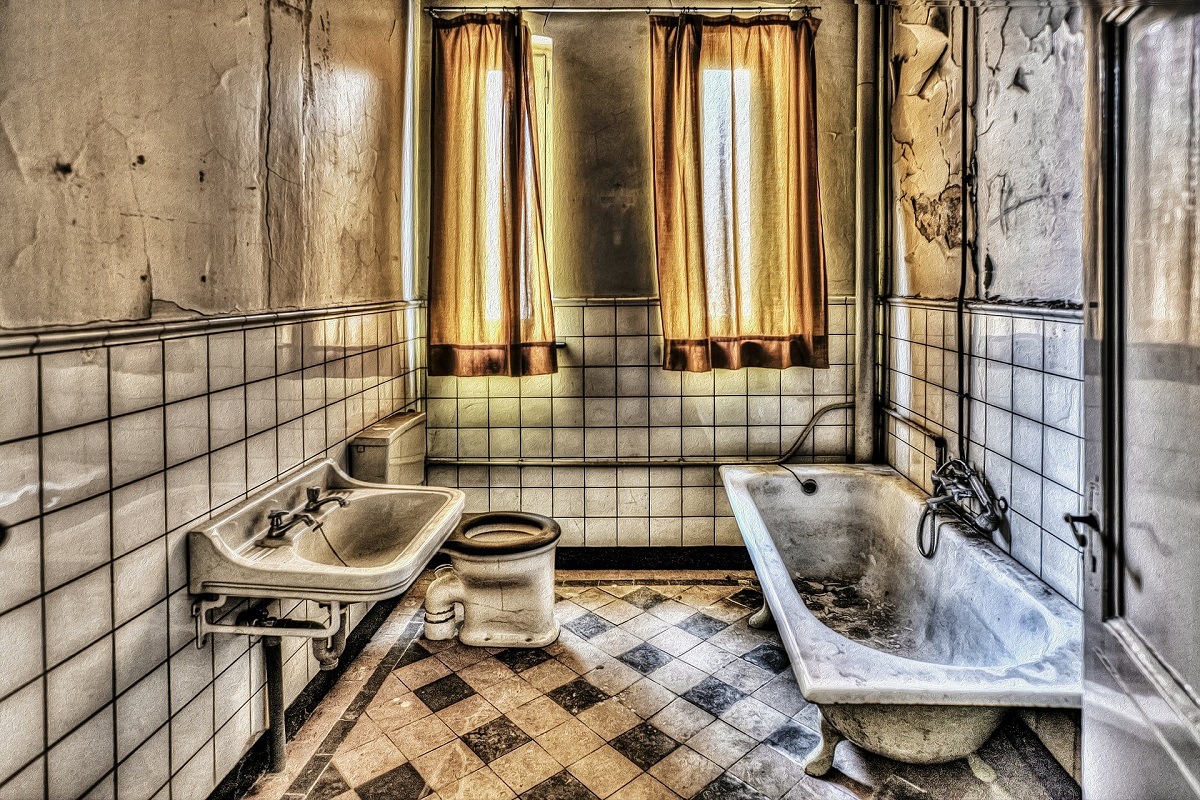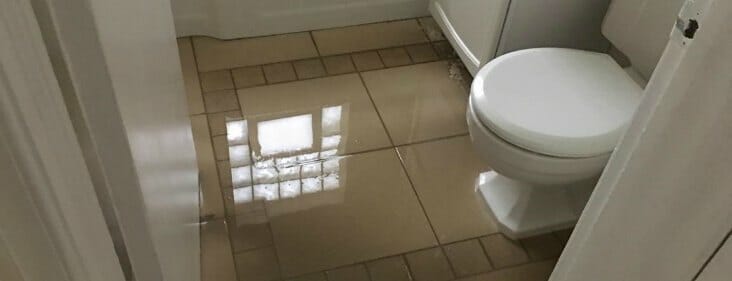Identifying The Reasons Behind Bathroom Water Damage
Identifying The Reasons Behind Bathroom Water Damage
Blog Article
Every person is bound to have their own individual perception when it comes to How to Repair and Prevent Bathroom Water Damage?.

Water damage often takes place in the bathroom because of the water utilized day-to-day. Sometimes, the damage could be a little mold from the shower. Other times, it's large damages on your floor. Whatever it is, it is always good to understand the cause as well as stop it before it happens.
This guide will undergo a few of the typical sources of water damage in the bathroom. We will also examine what you can do to avoid these causes from damaging your shower room. Allow's dive in.
5 Typical Root Causes Of Water Damage in Washrooms
These are the usual reasons you would have water damage in your bathrooms and how you can identify them:
Ruptured or Dripping Pipelines
There are many pipelines bring water to different parts of your restroom. Some pipes take water to the toilet, the sink, the taps, the shower, and many various other areas. They crisscross the tiny area of the bathroom.
From time to time, these pipes could obtain corroded as well as burst. Other times, human action could cause them to leakage. When this takes place, you'll discover water in the corners of your restroom or on the wall.
To spot this, look out for bubbling walls, molds, or mildew. Call an expert emergency plumbing technician to repair this when it happens.
Cracks in your wall ceramic tilesv
Bathroom wall surface floor tiles have actually been specifically developed for that purpose. They shield the wall surface from wetness from individuals taking showers. Nonetheless, they are not undestroyable.
Often, your restroom wall floor tiles crack and also enable some moisture to leak right into the wall. This can potentially destroy the wall surface if you don't take any kind of activity. If you observe a fracture on your wall surface floor tiles, fix it immediately. Don't wait till it damages your wall surface.
Overflowing commodes as well as sinks
As people, sometimes we make errors that could trigger some water damage in the bathroom. For instance, leaving your sink tap on can trigger overruning as well as damage to various other parts of the bathroom with dampness.
Also, a malfunctioning bathroom could trigger overruning. For instance, a busted toilet manage or other parts of the cistern. When this takes place, it could harm the floor.
As quickly as you notice an overruning sink or toilet, call a plumber to assist deal with it promptly.
Roof covering Leaks
Occasionally, the problem of water damage to the shower room could not come from the shower room. As an example, a roof leak can cause damage to the shower room ceiling. You can spot the damage done by taking a look at the water discolorations on the ceiling.
If you locate water stains on your ceiling, inspect the roof covering to see if it's damaged. Then, call an expert to assist address the concern.
Excess Moisture
It's awesome to have that long shower as well as splash water while you dance around as well as imitate you're executing, but often these acts can create water damage to your bathroom.
Sprinkling water around can create water to go to corners as well as create molds. Watch how you spread excess wetness around, as well as when you do it, clean it up to stop damages.
Verdict
Water damage to your washroom can be irritating. However, you can handle it if you avoid some of the causes mentioned in this overview. Call a professional emergency situation plumber if you notice any extreme damages.
How to Repair a Water-Damaged Wall in the Bathroom
All you need to know to repair bathroom wall water damage – from identifying the water source to finishing the repair professionally. If you don’t act quickly to resolve a water damage problem, you could find that it develops into a mold issue and/or cause structural damage to your home. Follow this guide to repair your bathroom before it's too late.
All you need to know to repair bathroom wall water damage
Water damage is a common household problem, and one that, if left unrepaired, can quickly lead to structural problems and health issues. The two most likely rooms where water damage may occur is the bathroom and the kitchen – where water is used often and there is high humidity.
What is water damage?
It is easy to think of water damage as caused by a flood or leaking tap or burst water pipe. However, when water damage is assessed, there are three main categories into which water falls (as classified by the American National Standards Institute). These categories are defined as:
Category 1 Water – ‘Clear Water’
This is sanitary water. There is usually no major threat to health by washing with this water, drinking it, or inhaling if it is streaming. Most water that enters your home will be category 1 water, while most water leaving your home will be either category 2 or 3 water. It may also come from melting snow, rainwater and water tanks.
Damage caused by this type of water can usually be repaired or restored, though this doesn’t mean that there are no potential health issues.
Category 2 Water – ‘Grey Water’
This is contaminated water – sometimes considerably so – and will cause illness if consumed or if it comes into contact with your skin. Water damage in this category is often caused by overflows from toilet bowls, and damage to washing machines and dishwashers. While damaged items might still be repaired or restored after damage by grey water, it is more difficult and more expensive to do so.
If the water damage in your home has been caused by grey water, it is advisable to have repairs made by professionals.
Over time, grey water will deteriorate and become black water.
Category 3 Water – ‘Black Water’
Category 3 water, also known as black water, is highly contaminated and a great risk to health. This may contain raw sewage, heavy metals, and other toxic substances. It will smell terrible.
If this is the water that has caused damage in your bathroom, do not touch it. Stop the water flowing if possible, seal the room and call the experts: it really isn’t worth the risk of ill health and disease that could be fatal. It is very unlikely that items can be repaired or restored if they have been damaged by black water.
https://www.porterscleaning.com/blog/how-to-repair-a-water-damaged-wall-in-the-bathroom/

How to Repair a Water-Damaged Wall in the Bathroom
All you need to know to repair bathroom wall water damage – from identifying the water source to finishing the repair professionally. If you don’t act quickly to resolve a water damage problem, you could find that it develops into a mold issue and/or cause structural damage to your home. Follow this guide to repair your bathroom before it's too late.
All you need to know to repair bathroom wall water damage
Water damage is a common household problem, and one that, if left unrepaired, can quickly lead to structural problems and health issues. The two most likely rooms where water damage may occur is the bathroom and the kitchen – where water is used often and there is high humidity.
What is water damage?
It is easy to think of water damage as caused by a flood or leaking tap or burst water pipe. However, when water damage is assessed, there are three main categories into which water falls (as classified by the American National Standards Institute). These categories are defined as:
Category 1 Water – ‘Clear Water’
This is sanitary water. There is usually no major threat to health by washing with this water, drinking it, or inhaling if it is streaming. Most water that enters your home will be category 1 water, while most water leaving your home will be either category 2 or 3 water. It may also come from melting snow, rainwater and water tanks.
Damage caused by this type of water can usually be repaired or restored, though this doesn’t mean that there are no potential health issues.
Category 2 Water – ‘Grey Water’
This is contaminated water – sometimes considerably so – and will cause illness if consumed or if it comes into contact with your skin. Water damage in this category is often caused by overflows from toilet bowls, and damage to washing machines and dishwashers. While damaged items might still be repaired or restored after damage by grey water, it is more difficult and more expensive to do so.
If the water damage in your home has been caused by grey water, it is advisable to have repairs made by professionals.
Over time, grey water will deteriorate and become black water.
Category 3 Water – ‘Black Water’
Category 3 water, also known as black water, is highly contaminated and a great risk to health. This may contain raw sewage, heavy metals, and other toxic substances. It will smell terrible.
If this is the water that has caused damage in your bathroom, do not touch it. Stop the water flowing if possible, seal the room and call the experts: it really isn’t worth the risk of ill health and disease that could be fatal. It is very unlikely that items can be repaired or restored if they have been damaged by black water.
https://www.porterscleaning.com/blog/how-to-repair-a-water-damaged-wall-in-the-bathroom/
Hopefully you enjoyed our section about How to Repair and Prevent Bathroom Water Damage?. Many thanks for taking the time to browse our piece. Sharing is caring. Helping people is fun. I value reading our article about How to Repair and Prevent Bathroom Water Damage?.
Further Details Report this page